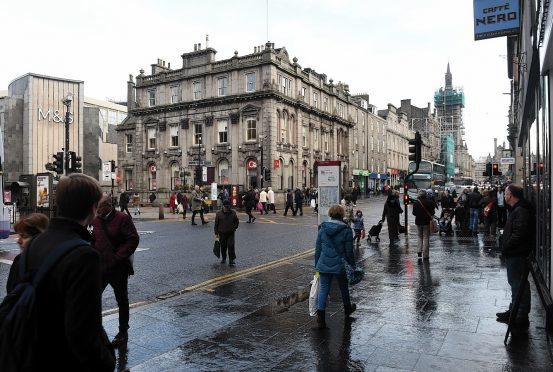New figures show retail activity in the centre of Aberdeen remained relatively robust during a year which saw one store shut each day in Scotland.
The city started 2016 with 464 shops and finished the year with 458, following 45 closures and 39 openings, according to research findings published by professional services firm PwC yesterday.
The study revealed more stores closed in Scotland than in any other part of the UK during the year, with a total of 366 shutting and 254 opening. The 3.44% net decrease was almost double the British average of 1.32%.
All nine areas surveyed across Scotland recorded an overall decrease in businesses, with banks, fashion outlets and charity shops hardest hit
Aberdeen’s net decrease of of 1.29% was the third lowest, with Leith, in Edinburgh, faring worst, at 10.53%, followed by Ayr with an 8.43% drop.
Edinburgh and Glasgow saw falls in high street store numbers of 4.89% and 2.01% respectively.
During the year more stores were opened in Scotland than elsewhere in Britain, except the north-east of England. Fast food outlets were among the most popular new openings, followed by convenience stores, tobacconists and TV equipment servicing firms.
Mark Addley, deals director at PwC Scotland, said: “The average of around one closure per day has been the Scottish average for most years since 2012 – but that will be of little comfort to people who have lost their jobs and livelihoods because of this.
“Overall, we are seeing far fewer closures due to outright insolvencies, but more due to the lower key restructuring of store portfolios.”
Mr Addley said the survey also showed an increasing trend of companies with several outlets on retail parks consolidating into one store.
He added: “Looking ahead, I doubt the figures are going to improve by the end of 2017 for areas like banking as we’ve seen a number of companies announce branch closures of late, but other areas may pick up depending on the levels of tourism Scotland and Great Britain sees over the summer.”










